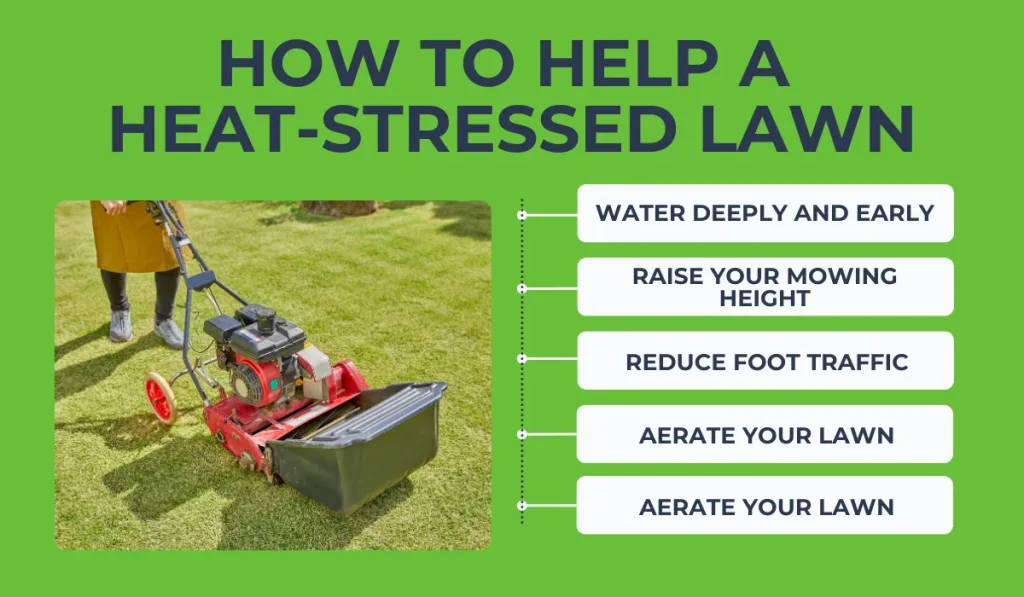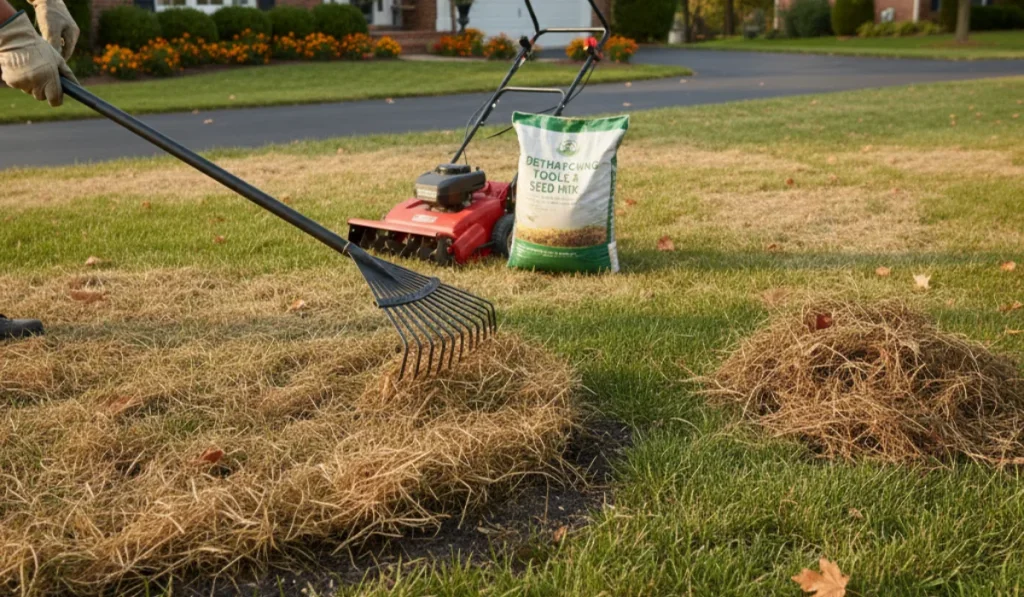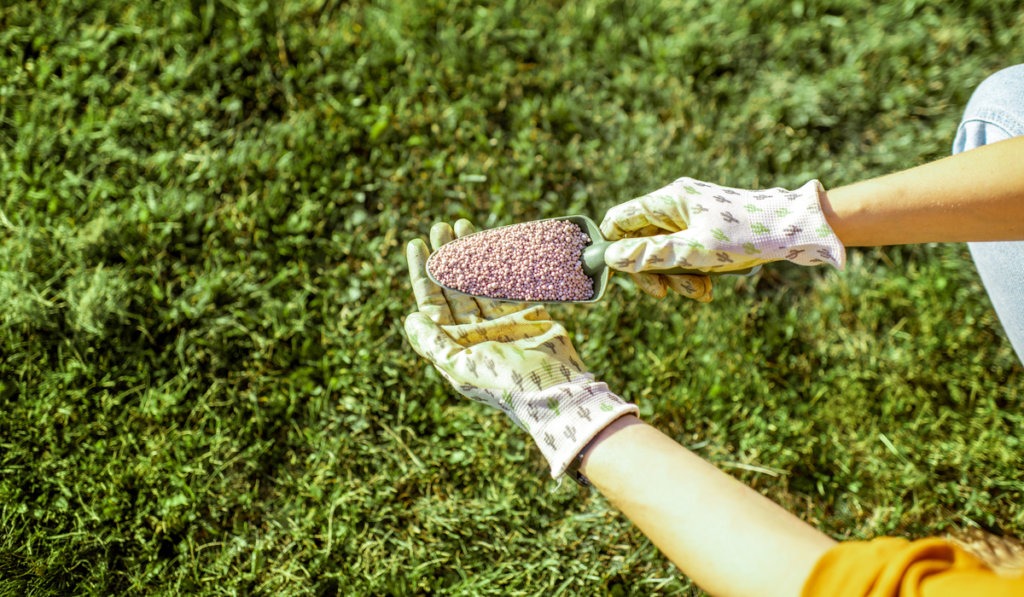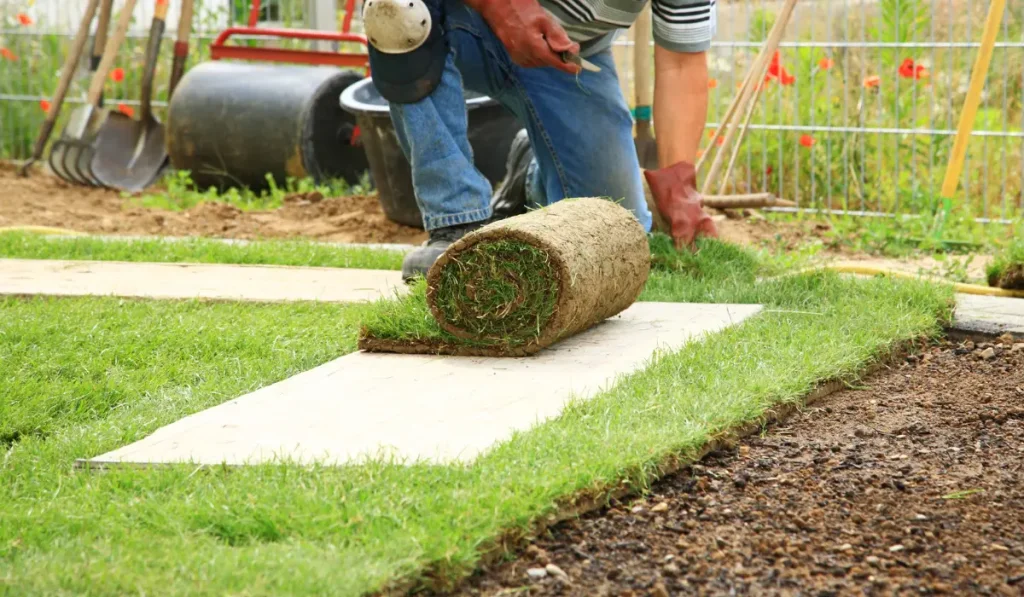California summers can be brutal on your lawn. If your grass looks dull, your sod may be suffering from heat stress. Homeowners in areas with high temperatures and little rain often experience this problem during the summer.
Heat stress happens when your grass can’t get enough water to stay healthy in high temperatures. Without enough water, your grass blades and roots weaken.
In this guide, we’ll explain what heat stress is and how it affects your lawn. We’ll also show you how to catch the early signs to stop severe damage before it starts.
Key Takeaways:
- Heat stress in sod occurs every day during California’s summer months. Heat stress usually happens in areas with high temperatures and dry weather.
- Signs of sod heat stress include curling grass blades, brown patches, wilting, and lingering footprints, indicating insufficient moisture.
- Deep morning watering, higher mowing height, reduced foot traffic, and lawn aeration are the most effective ways to help your lawn recover.
- TifTuf Bermudagrass is great for hot weather. It stays green longer, needs less water, and bounces back quickly from damage.
What is sod heat stress?
Heat stress happens when your turfgrass can’t get enough moisture to stay healthy when it’s hot. Without adequate water, grass blades lose their rigidity and grass roots weaken. When this happens, your lawn is more likely to dry out, discolor, or get diseased.
New sod dries out faster and is easier to damage. Even strong grasses like tall fescue, zoysia, and bermudagrass can be hurt by very hot summers.
Signs your sod is heat-stressed
Catching early signs of heat stress can help prevent severe lawn damage. The following signs may mean your lawn is in trouble:
- Grass blades curling or folding: Your grass’s blades are your lawn’s first line of defense against evaporation.
- Discoloration or brown patches: If your lawn turns from green to yellow or brown, it likely means there’s a problem with the roots.
- Footprints that stay visible: If footprints or mower tracks don’t spring back, it’s a sign the grass doesn’t have enough water inside to bounce back.
- Wilting and slowed growth: When roots can’t absorb enough water, your grass goes into survival mode. It stops growing so it can focus on staying alive.
Common causes of heat stress
1. High temperatures and summer heat
Long stretches of hot weather, especially heatwaves, can stress your lawn. Cool-season grasses like fescue struggle the most in triple-digit conditions.
2. Not enough water
A healthy lawn typically needs an inch of water per week, but it’s given less often in larger amounts. If you water too little, your lawn grows short roots, which dry out faster.
3. Compacted or clay soil
Soil compaction makes it harder for water to reach the roots and for roots to grow. In California’s inland and Central Valley regions, heavy clay soils can intensify drought stress if left untreated.
4. Poor mowing practices
Cutting your lawn too short removes the natural shade the blades provide to the soil. Lower mowing height increases exposure to evaporation and root damage.
How to help a heat-stressed lawn

1. Water deeply and early
Run your sprinkler in the early morning, ideally between 4 a.m. and 8 a.m. Setting the sprinkler on during this window gives the water time to soak in before evaporation kicks in. Deep watering helps grass develop a deeper root system, enabling it to reach more moisture during hot weather.
2. Raise your mowing height
Raise your mowing height during summer. Taller grass helps keep the soil cool and holds in moisture better, while also protecting the root system. Make sure to mow with sharp mower blades so the grass is cut cleanly without tearing.
3. Reduce foot traffic
Avoid walking or playing on your lawn in the heat, since weak grass recovers more slowly.
4. Aerate your lawn
Aerating your lawn breaks up hard soil, allowing water and nutrients to reach the roots more effectively. Aeration works best before or after long dry spells. You can also follow aerating your lawn with overseeding to fill in bare or thin spots caused by heat damage.
5. Don’t worry if your grass goes dormant
Warm-season grasses like Bermuda grass and zoysia go dormant during extreme heat. Going dormant is their natural defense against heat. If your lawn turns brown but the grass still stands tall, it may just be “resting.” Continue to give it small amounts of water to help the roots stay alive.
Long-term lawn care tips for hot climates
If you live in a part of California that experiences extreme summer heat, planning is essential:
- Choose heat-tolerant sod like TifTuf Bermudagrass. This type of grass grows well in full sun, holds color longer, and recovers quickly from damage
- Have a seasonal lawn care routine. This routine should include aeration, overseeding (especially if you have cool-season grass), and proper fertilization.
- Don’t ignore any early signs of lawn disease or grub activity. Ignoring the early signs can worsen heat-stressed lawns further.
When to replace your sod
If significant parts of your lawn stay dry, patchy, or don’t respond to care, it’s probably time to lay new sod. Sometimes, a heatwave can hurt the roots so much that they can’t grow again.
At SodLawn, we deliver high-quality sod for lawns throughout California. We offer grass types that can handle heat and drought, like tall fescue for shady areas and TifTuf for full sun.
Reach out to us today to get expert advice and fast delivery across California..
FAQs
What does heat-stressed sod look like?
Heat-stressed grass may curl or wilt. One of the earliest signs is a dull bluish-gray color before the lawn turns brown. You might also notice brown patches or footprints that don’t spring back, indicating your lawn isn’t receiving enough water.
Can I fertilize a heat-stressed lawn?
It’s best to wait. Fertilizer in hot weather can burn your lawn. Hold off until temperatures cool down and your grass recovers with watering.
How often should I water my lawn during a heatwave?
Water deeply in the early morning. Aim for one inch per week, but increase frequency during heatwaves to keep roots from drying out.



